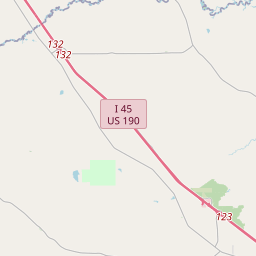Cook Springs Baptist Church







Baptists organized here in 1901 and held services at the Guinea Glade School (about 2 mi. NW). Brother Elisha E. Day (1848-1936), pastor of the Woodville Church (about 10 mi. SW), helped establish the congregation and conducted its first services. Charter members included Mr. and Mrs. Jim Cauthen, Mr. and Mrs. W. H. Hill, Mr. and Mrs. Jesse Petree, Mr. and Mrs. John L. Petree, Mrs. Mary Petree, Mr. and Mrs. Peter Petree, Mr. and Mrs. E. H. Tharp, and Miss Ruth Tharp. Mrs. Sarah Brown Gaines, wife of Toliver L. Gaines, organized the Sunday School.
In 1903 Mrs. Scisely Wells Cook Rose (1830-1912), also a charter member, gave this spring-fed site for a church building. She asked that the church be named for her late husband, John William Cook, who died in 1864 in the Civil War.
Records date from 1907, when Deacon Edwin Harris Tharp (1849-1922) was church clerk and C. W. Matthews was the first called pastor listed. By 1912 a wooden sanctuary was completed. Services were held one weekend per month, Saturday night and Sunday morning.
A new building was dedicated in 1945, assembled and furnished largely by the labors of the congregation. Many additions indicate the growth of the church, yet the original spring survives, occupying a revered site
As one of the most visible programs of the Texas Historical Commission (THC), historical markers commemorate diverse topics in Texas history, including: the history and architecture of houses, commercial and public buildings, religious congregations, and military sites; events that changed the course of local and state history; and individuals who have made lasting contributions to the state, community organizations, and businesses.
Texas has been a major oil-producing state for over a century. The first big oil discovery in Texas was the Spindletop field near Beaumont in 1901, which set off a massive oil boom that transformed the state's economy and made Texas one of the wealthiest states in the country.
In 1836, Walker County was officially established and named after Samuel Hamilton Walker, a Texas Ranger captain who died in the Mexican-American War. The county became a hub for trade and commerce, with the town of Huntsville serving as the county seat. The early residents engaged in farming, ranching, and timber industries, which became the backbone of the local economy.
During the Civil War, Walker County played a significant role as a major supplier of food and provisions to the Confederate army. However, the county also faced its share of hardships, including raids by Union troops and the devastation caused by the war. After the war, Walker County experienced a period of reconstruction and gradual recovery.
In the late 19th and early 20th centuries, Walker County saw significant progress and development. The expansion of railroads brought new opportunities for trade and transportation, and the discovery of oil in the early 1900s further boosted the local economy. In recent decades, Walker County has continued to grow and evolve, embracing modern industries while preserving its unique heritage and natural beauty. Today, the county is known for its thriving educational institutions, correctional facilities, and vibrant community.
Walker County Timeline
This timeline provides a condensed summary of the historical journey of Walker County, Texas.
- 1836: Walker County is established
- 1846: Huntsville becomes the county seat
- 1861: Walker County residents vote for secession from the Union
- 1870: The Houston and Great Northern Railroad reaches Huntsville
- 1900: The town of New Waverly is incorporated
- 1936: Sam Houston State Teachers College is established
- 1965: The Texas Department of Corrections is established in Huntsville
- 1970: San Jacinto Mall opens in Baytown
- 1999: The City of Huntsville celebrates its 150th anniversary
- 2007: The Texas Department of Criminal Justice moves its headquarters to Huntsville